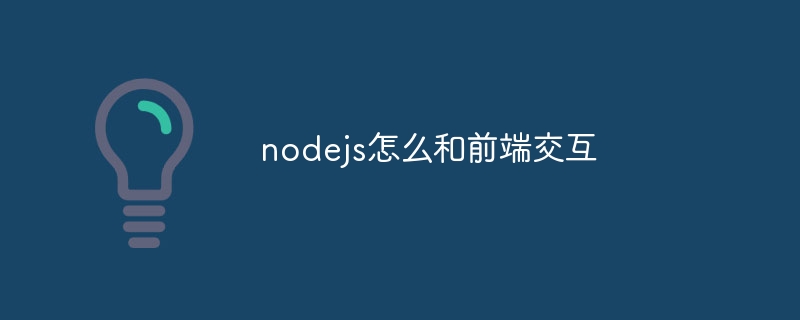
Node.js interacts with the frontend via HTTP request/response, WebSocket, and Socket.IO: Set up a Node.js server and define routes. The front end sends HTTP requests or establishes connections using WebSocket or Socket.IO. The Node.js server handles the request and returns a response or sends data over a live connection.

Node.js Interaction with the front-end
Node.js is a method for building server-side applications JavaScript runtime environment. It can interact with front-end technologies such as HTML, CSS, and JavaScript to provide dynamic and interactive web applications.
Interaction methods
Interaction between Node.js and the front-end can be carried out in the following ways:
Implementation steps
1. Create server:
<code class="javascript">const express = require('express');
const app = express();
const server = app.listen(3000);</code>2. Define route:
<code class="javascript">app.get('/', (req, res) => {
res.send('Hello from Node.js!');
});</code>3. Handle front-end requests:
<code class="javascript">app.post('/submit-form', (req, res) => {
const data = req.body;
// 处理表单数据...
});</code>4. Use WebSocket:
<code class="javascript">const WebSocket = require('ws');
const wss = new WebSocket.Server({ server });
wss.on('connection', (ws) => {
// 与客户端建立 WebSocket 连接...
});</code>5 . Using Socket.IO:
<code class="javascript">const socketIO = require('socket.io');
const io = socketIO(server);
io.on('connection', (socket) => {
// 与客户端建立 Socket.IO 连接...
});</code>Front-end code example:
<code class="javascript">// 发送 HTTP 请求
fetch('/submit-form', {
method: 'POST',
body: JSON.stringify({ name: 'John' }),
})
.then((res) => res.json())
.then((data) => console.log(data));
// 建立 WebSocket 连接
const socket = new WebSocket('ws://localhost:3000');
socket.onopen = () => console.log('Connected to WebSocket');
// 使用 Socket.IO
const socket = io();
socket.on('connect', () => console.log('Connected to Socket.IO'));</code>The above is the detailed content of How nodejs interacts with the front end. For more information, please follow other related articles on the PHP Chinese website!